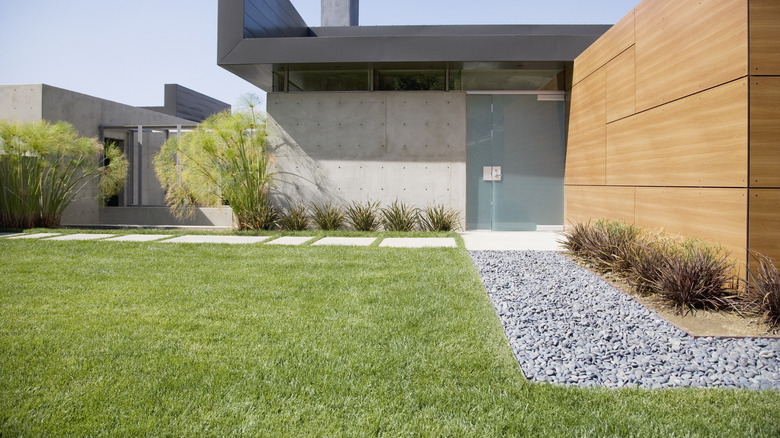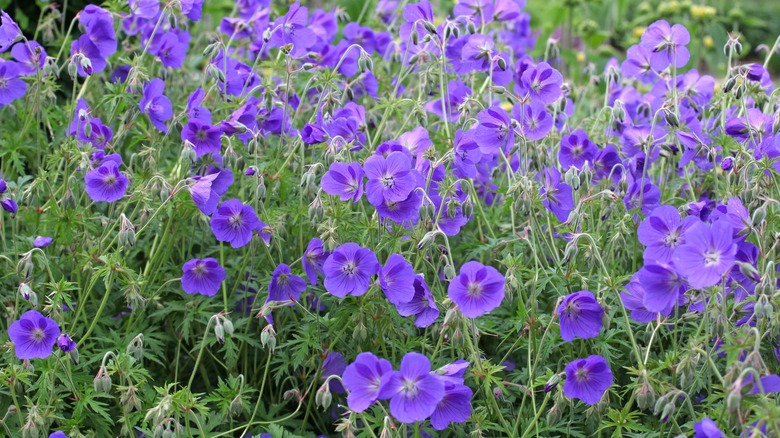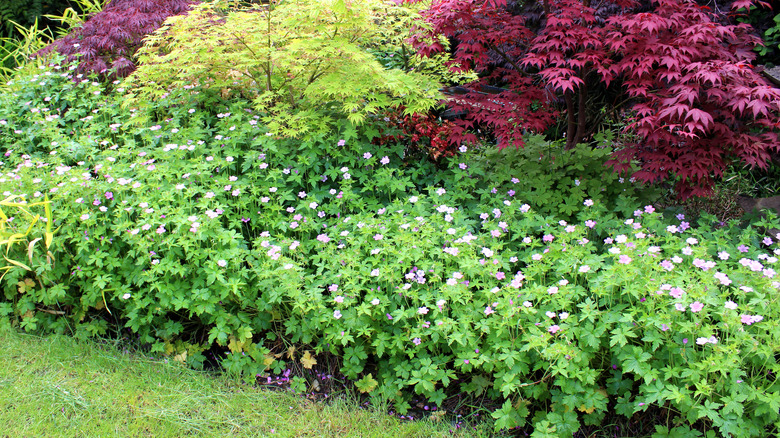Ditch Traditional Grass & Grow This Stunning Perennial Ground Cover Instead
The traditional lawn is beautiful in its own right, but if you don't have pups or kiddos who need a place to run around, consider changing your lawn to easy-to-grow ground cover plants. The hardy geranium is an excellent choice because it provides lush green foliage throughout the year, gorgeous flowers in the summer, and you can expect the plant to come back every year. It's relatively low maintenance, and if you grow it in an area that doesn't get much foot traffic, you'll see the plant spread quickly.
Hardy geraniums aren't the same as annual geraniums; the annual ones aren't even technically geraniums. The annual version is Pelargonium, while the hardy version is a true geranium. The perennial version grows rhizomes that allow the plant to survive winter and come back each spring. Although annual geraniums are lovely to look at, you can't expect them to pop up again. Hardy geraniums are also capable of self-seeding, so they can cover an area in a short time thanks to their rhizomes and seeds.
Using hardy geranium instead of boring grass
If you want to make your yard more whimsical or upstage the neighbor, hardy geraniums are the way to go. With over 250 species tolerating a variety of temperature ranges, there's sure to be something that will fit your space perfectly. Geranium sanguineum is hardy down to USDA zone 3, while Geranium 'Rozanne' can only tolerate down to zone 5. Though each species varies slightly, you can anticipate these plants to grow as mounds up to 1.5 feet tall and up to 2 feet wide. They usually grow in clumps, but once they spread out and self-seed, they'll look less clumpy and more like a ground cover that fills in a space well.
Another type of true geranium is the bigroot geranium, aptly named for their thick rhizomes. These rhizomes allow the plants to endure some drought and stay green almost all year long. They spread readily via rhizomes, though some species can self-seed; however, self-seeding will result in plants that look different from the parent plant since they aren't true to type. Similar to other hardy geraniums, bigroot geraniums are typically 1 foot tall and spread out twice as much. The leaves will take on red hues in the fall, providing you with gorgeous color throughout the year. The constant color is a great reason to keep perennial geraniums through winter in your landscape.
How to grow hardy geranium ground cover
Hardy geraniums have similar care needs, no matter which species you choose to grow. They thrive when they have at least six hours of sunlight and consistently moist soil, but the soil needs to drain well since the roots and rhizomes don't like excessive moisture. Established plants can tolerate partial shade and short bouts of drought, making them a forgiving choice if you forget to water them and it doesn't rain. The soil should be fertile with a neutral pH; compost is a great way to make these plants happy.
When planting geraniums as a ground cover, you may be inclined to take a "set it and forget it" approach. You can certainly do that, but taking some time each day for maintenance will allow your plants to cover the area better and bloom longer. Theses plants will also perform better if you deadhead them, which is removing blooms once they wilt. If you don't want them to self-seed, deadheading will prevent the plants from doing so. However, if you do let them self-seed, you can transplant the seedlings into better locations to stop the plants from overcrowding an area and leaving empty spots. If you don't have the time to tend to your plants, letting them do as they please will still result in a gorgeous ground cover.


